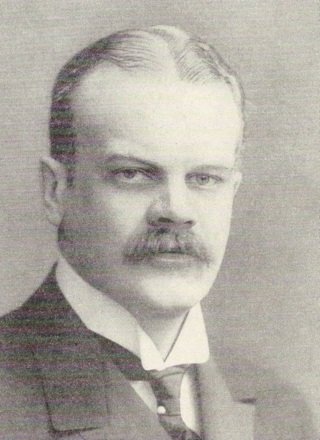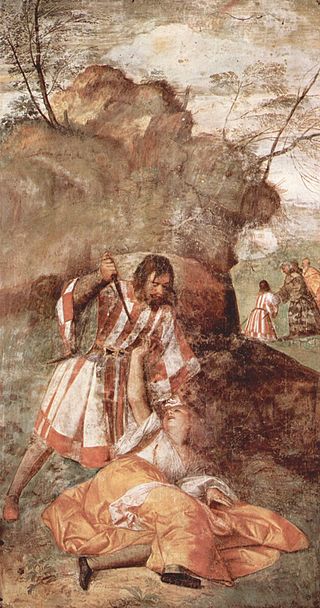
Carl Nielsen's Helios Overture, Opus 17, is a concert overture which was first performed by the Royal Danish Orchestra, conducted by Johan Svendsen, on 8 October 1903 in the large hall of the Odd Fellows Mansion in Copenhagen.

Carl Nielsen's Helios Overture, Opus 17, is a concert overture which was first performed by the Royal Danish Orchestra, conducted by Johan Svendsen, on 8 October 1903 in the large hall of the Odd Fellows Mansion in Copenhagen.
Besides his well-known six symphonies, the Danish composer Carl Nielsen wrote many short orchestral works, one of the most famous being the Helios Overture. [1] In 1902, Nielsen signed a contract with the publisher Wilhelm Hansen, which allowed him to go to Athens, Greece, to join his wife Anne Marie Carl-Nielsen, who was one of the first sculptors allowed to make copies of the bas-reliefs and statues in the Acropolis Museum.
Anne Marie, who had been granted the Ancker Award, was studying Greek art, while Nielsen, being a man of many interests, was interested in archaeology. [2] The local conservatory placed a study room with a piano at Carl Nielsen's disposal. Here he could sit and compose when he was not on excursions in the surrounding mountains with or without Anne Marie. [2] Nielsen's stay in Athens gave him the inspiration of a work depicting the sun rising and setting over the Aegean Sea, an overture which he called Helios . He began work on it in March 1903, and finished it on April 23 the same year. [1] [2]
The score is written for three flutes, two oboes, two clarinets, two bassoons, four horns, three trumpets, three trombones, tuba, timpani, and strings.
The work begins as the sun ascends over the Aegean Sea, while strings, divided horns and woodwind sound a melody. This rises out of the darkness to a full orchestra, where fanfaring trumpets begin a striding theme, which returns later in the piece. From there woodwinds begin a graceful tune, from which brass sound. Strings begin to play, which draws the orchestra into a reprise of the striding theme and its fanfare. In the final measures, the music subsides as the sun sinks over the horizon of the sea. The average playing time is between ten and twelve minutes.
On the score, Nielsen wrote:
"Silence and darkness, The sun rises with a joyous song of praise, It wanders its golden way and sinks quietly into the sea." [3] After a trip to Turkey, Carl and Anne Marie Nielsen traveled through Italy and reached Copenhagen by the end of July. [2] The Helios Overture was successfully performed in Copenhagen on 8 October 1903, with Johan Svendsen conducting, though the reviews were mixed. Carl Nielsen performed Helios several times. The first was an evening concert dedicated to his compositions at the Odd Fellow Mansion on 11 November 1905 and the last performance was on 12 February 1930 in Gothenburg, Sweden. He also played the overture in Helsinki, Stockholm and Berlin. [4]
Being a great showpiece for orchestra, it has been one of Nielsen's most famous works ever since. [5]
On the basis of information from the Carl Nielsen Society, the Helios Overture is currently one of Nielsen's most widely performed works. [6]

Carl August Nielsen was a Danish composer, conductor and violinist, widely recognized as his country's most prominent composer.

Niels Wilhelm Gade was a Danish composer, conductor, violinist, organist and teacher. Together with Johan Peter Emilius Hartmann, he was the leading Danish musician of his day, in the period known as the Danish Golden Age.

Hugo Emil Alfvén was a Swedish composer, conductor, violinist, and painter.
Carl Nielsen's Concerto for Clarinet and orchestra, op. 57 [D.F.129] was written for Danish clarinetist Aage Oxenvad in 1928. The concerto is presented in one long movement, with four distinct theme groups.
Symphony No. 6 "Sinfonia semplice",, FS 116. In August 1924 Danish composer Carl Nielsen began working on a Sixth Symphony, which turned out to be his last. By the end of October he wrote to Carl Johan Michaelsen:
As far as I can see, it will on the whole be different from my other symphonies: more amiable and smooth, or how shall I put it, but it is impossible to tell as I do not know at all what currents I may run into during the voyage.

Symphony No. 5, Op. 50, FS 97 is a symphony composed by Carl Nielsen in Denmark between 1920 and 1922. It was first performed in Copenhagen on 24 January 1922 with the composer conducting. It is one of two of Nielsen's six symphonies lacking a subtitle, the other being his Symphony No. 1.
Symphony No. 4, Op. 29, FS 76, also known as "The Inextinguishable", was completed by Danish composer Carl Nielsen in 1916. Composed against the backdrop of the First World War, this symphony is among the most dramatic that Nielsen wrote, featuring a "battle" between two sets of timpani.

Otto Valdemar Malling was a Danish composer, from 1900 the cathedral organist in Copenhagen and from 1889 professor, then from 1899 Director of the Royal Danish Academy of Music, Copenhagen.

The Royal Danish Orchestra is a Danish orchestra based in Copenhagen. The Danish name for the orchestra indicates its original function as an ensemble geared to supplying the music for court events. The Royal Danish Orchestra presently consists of around 100 musicians. The principal venue for the orchestra's traditional symphony concerts is the Copenhagen Opera House, where the orchestra also serves as the orchestra for the Royal Danish Opera, as well as holding several annual chamber orchestra concerts in the foyer of the smaller experimental stage Takkelloftet. Most ballet and some opera performances takes place at the Old Stage of the Royal Danish Theatre.

Thomas Jensen was a Danish orchestra conductor.

Saul og David is the first of the two operas by the Danish composer Carl Nielsen. The four-act libretto, by Einar Christiansen, tells the Biblical story of Saul's jealousy of the young David, taken from the Book of Samuel. The first performance was at the Royal Danish Theatre, Copenhagen, on 28 November 1902.
Symphony No. 1 in G minor, Op. 7, FS 16 is the first symphony of Danish composer Carl Nielsen. Written between 1891 and 1892, it was dedicated to his wife, Anne Marie Carl-Nielsen. The work's première, on 14 March 1894, was performed by Johan Svendsen conducting the Chapel Royal Orchestra, with Nielsen himself among the second violins. It is one of two symphonies by Nielsen without a subtitle.

Axel Ejnar Hakon Børresen was one of the foremost Danish composers of the 20th century.

Andreas Makris was a Greek-American composer and violinist, born in Kilkis, Greece, on March 7, 1930. He was a Composer-in-Residence for many years at the National Symphony Orchestra in Washington DC, working with conductors such as Howard Mitchell, Mstislav Rostropovich, Antal Dorati, and Leonard Slatkin. He composed around 100 works for orchestra, chamber ensembles, and solo instruments, including the Aegean Festival Overture, which, transcribed for concert band by Major Albert Bader of the USAF Band, became a popular piece with US bands. Grants and awards he received include the Damroch Grant, National Endowment for the Arts Grant, the Martha Baird Rockefeller Award, ASCAP Award, the Fulbright Scholarship, and citations from the Greek Government.

Carl Nielsen's Suite for String Orchestra was one of the composer's earliest works and was first performed at the Tivoli Hall on 8 September 1888.

Carl Nielsen's Aladdin, Opus 34/FS 89, is incidental music written to accompany a new production of Adam Oehlenschläger’s "dramatic fairy tale" presented at The Royal Theatre in Copenhagen in February 1919.
Carl Nielsen's String Quartet No. 1 in G minor, Opus 13, was first performed privately on 18 December 1889 in Copenhagen. It was the first of Nielsen's four string quartets in the official series.

Hymnus amoris, for soloists, choir and orchestra, Opus 12, is Carl Nielsen's earliest choral work. It was first performed at the Music Society (Musikforeningen) in Copenhagen on 27 April 1897 under the baton of the composer.

Søvnen, for chorus and orchestra, Opus 18, is Carl Nielsen's second major choral work. It was first performed at the Music Society (Musikforeningen) in Copenhagen on 21 March 1905 under the baton of the composer.
Events from the year 1894 in Denmark.